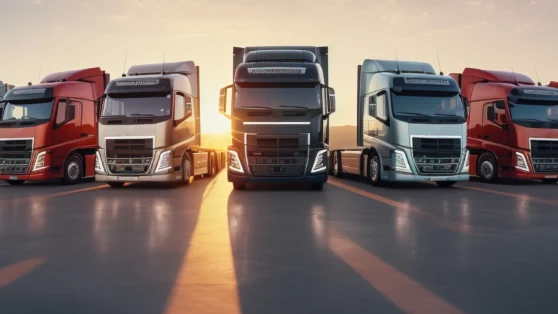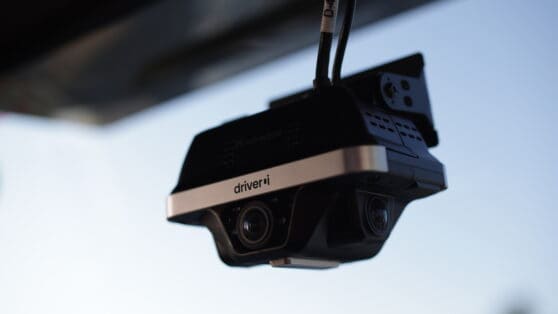Transportation companies face a significant amount of risk when their drivers are out on the road, thanks to the frequency of road accidents. Large commercial vehicles are involved in at least 400,000 collisons in the United States annually, making them both a potential threat to public safety and a liability to insurance companies, according to a report by the Federal Motor Carrier Safety Administration (FMCSA).
To offset some of the liability, insurance companies are adopting transportation safety technology to guide their policy decisions. In the insurance market, leveraging new technology is proving to be valuable, not just to insurers who now have better ways of collecting evidence to protect themselves from disputable claims, but also for transportation companies. Some insurers offer trucking companies significant discounts in exchange for data collected using transportation safety technology.
Truck drivers are expected to be more averse to road accidents due to their training, certifications, and adherence to strict employer policies; however, the FMCSA report showed that in 2017, up to 4,889 large trucks were involved in road accidents.
As the transport industry grows, so does the trucking insurance industry. Unfortunately, this has not translated into lower insurance rates. Instead, rates have seen a steady climb in recent years. Because insurance is necessary, several companies have to reallocate funds to cover payments, making it more difficult to stay afloat. At this rate, several companies are cutting certain insurance covers to divert funds to other operational areas.
Why is the Cost of Commercial Transport Insurance so High?
To understand why rates keep increasing, it is important to understand how insurance works.
Insurance companies make money from underwriting profits and investing the premiums that customers pay. Unfortunately, the margins for both are not enough for them to cover the growing number of insurance claims and remain profitable. So in a sense, transport insurance rates are high because insurers will not make enough money to cover claims otherwise.
In fact, from all indications, trucking insurance rates may continue to climb, thanks to factors such as an increase in road traffic accidents caused by speeding, distracted driving, or vehicle-related faults. “Nuclear” verdicts, jury awards in excess of $10 million are also driving insurance rates up.
There has been an explosion of motor accidents likely exacerbated by the use of smartphones and other devices creating distractions while driving. The driver shortage problem is also a contributing factor, since younger drivers are less trained and more likely to be involved in road accidents.
Other factors include the rising cost of vehicle repairs and medical costs due to damage from accidents, since healthcare costs have skyrocketed in recent years. The cost of maintaining technologically-advanced vehicle models are also very expensive for insurers.
Insurers Are Starting to Look at Vision-Based Technologies to Reduce Costs
Apart from the risk of injury and death to drivers and other road users, accidents pose another problem in the form of insurance claims. Commercial motor vehicle claims are usually caused by driver error, vehicle breakdown or environmental factors. The FMCSA cited brake problems as the most common cause, accounting for 29% of all vehicle-related claims. Up to 20% of crashes involved changing environmental factors while 14% involved the weather.
Vision-based technologies like Driveri, the fleet safety management tool by Netradyne, collect visual data of road and driving conditions before, during, and after accidents occur. This type of technology could potentially reduce insurance costs for the following reasons:
- Commercial auto insurance claims are increasing with the collision rate, and without technology, there is insufficient data to dispute claims when the other road users are at fault.
- Reactionary measures have always been the norm in the insurance market. However, with vision-based technologies, data collected can be used to take preventive measures, reducing the number of accidents, and by extension, the number of claims that insurance companies have to handle.
How Insurers Are Adopting Transportation Safety Technology
Insurers are adopting technology in ways that personalize risk and collect data for thorough analysis and decision-making.
Risk Personalization
Technology is helping insurance carriers work directly with companies to introduce risk assessment processes for their drivers. Since distracted driving is responsible for about 1000 injuries and 9 fatalities each day, insurers promote the use of technology that detects these distracted behaviors. Mobile applications that monitor drivers during their transport cycle are currently the most popular option.
The Driveri app uses a comprehensive monitoring system that observes these behaviors and alerts fleet managers. It also plugs into an effective rewards system for positive driving behaviors (DriverStar), and a real-time performance rating system (GreenZone).
If drivers know that their ratings depend on how focused they are, they are less likely to exhibit these behaviors. This prevents accidents and saves both the transportation company and the insurance carrier substantial costs.
Data Sharing
Insurers can benefit from drawing insights from data collected on the road. Instead of doing the legwork, they can simply promote the use of efficient data collection and analytics technology in fleets. Typically, insurers offer certain benefits and discounts in exchange for road data which could influence their policies and costs.
Electronic Logging Devices (ELDs) have been mandatory according to federal law since December 2017. It is also a prerequisite for most insurers. Insurance carriers will not write the risk if a carrier is knowingly violating the ELD mandate.
Some insurance carriers could offer fleets 5% – 15% off their premium to show ELD data records. Discounts are measured by how safely the trucking companies have carried out their operations in recent years. This serves as an incentive for fleets to take appropriate safety measures that insurers benefit from due to the reduction in accidents.
Evidence Collection
Road accidents happen for many different reasons, and sometimes the question of who was right or wrong depends on the context of events. Without vision-based technology, an accident becomes a case of one person’s word against another. Driveri uses its powerful HD cameras and sensor technology to collect and store as much data as possible to avoid this situation.
In addition to these features, Netradyne has created a powerful artificial intelligence tool that analyzes such situations in real-time using metrics like following distance, speed, driver behavior, road conditions, and risks.
This data can be used as evidence when a false claim is made. A vision-based technological approach could be the difference between quick exoneration and a drawn-out legal process that costs millions of dollars. Insurers stand to gain a lot of value by championing the implementation of such systems in fleets across the country.
Benefits of Transportation Safety Technology to Insurers
- Insurance companies can create more simplified coverage for clients by studying the data collected over time for that client.
- The use of technology in trucking fleets reduces the occurrence of accidents. This means that insurers will have fewer payouts to make.
- Technology provides a more efficient and straight-forward way to collect visual evidence of events and proof that clients are innocent when it comes to these kinds of events. This saves them time and money in court.
About Netradyne’s Driveri
Recent breakthroughs in artificial intelligence indicate that its future applications could potentially disrupt several industries, including transportation. The adoption of technology by insurers could not have come at a better time than in an era when artificial intelligence is unlocking some of the best automation benefits across several industries.
The Driveri application is geared towards fleet safety, smart predictions, and accident reduction— all things that the insurance industry stands to benefit from. It combines high-level hardware with artificial intelligence software to effectively manage fleet operations.
Driveri combines several valuable features on a simple mobile application that connects to the small hardware device installed inside fleet vehicles for easy access. This mobile version of Driveri ensures that data can be communicated from any location, and in real-time.
The Driveri platform handles everything from collecting and analyzing road data in real-time to monitoring drivers for negative driving behaviors, including distracted driving. It also handles communication, as well as real-time driver alerts, feedback, driver ratings, and a rewards system fed by its vision-based approach. Driveri features make it a perfect tool not just for trucking companies, but also for insurers. These features include a vision-based system, artificial intelligence data analytics system, and a rewards system.
Vision-based System
Driveri cameras and sensors constitute a vision-based system that collects evidence of all events happening within and around the vehicle throughout the transport cycle. The platform uses a group of forward-facing, side, and interior QUAD HD cameras for high-quality video recording and real-time event playback. Managers and insurers have access to more than 50 hours of video playback whenever necessary. This benefits insurance companies in the following ways:
- Managers can monitor their drivers on the road and watch out for distracted driving. This provides the opportunity to caution drivers and to take other preventive measures before accidents happen. Accident prevention leads to far fewer payouts by insurance carriers.
- This vision-based approach allows insurance companies to collect as much video evidence as possible in any situation. Video evidence collected can be used in court during legal proceedings when other road users or uncontrollable circumstances caused the accident. Collecting proof can also help companies prevent undeserved criticism of their drivers.
- Apart from exonerating drivers, it could help insurers create better policies according to the new data collected.
Rewards System
DriverStar, the Driveri rewards system ensures that drivers can be rewarded for their good conduct. Rewarding drivers may likely encourage them to perform better, which in turn leads to a higher regard for road safety and also reduces fleet accidents. This unbiased performance system is a great way for insurers to see which companies pay more attention to driver safety and performance.
Data Analytics System
Distracted driving behaviors like texting, looking away from the road, eating, sleeping, fiddling with the stereo system, or driving while intoxicated lead to accidents which cost insurers millions of dollars in claims annually.
Even with a vision-based approach, tracking these behaviors is difficult, especially in large fleets because managers cannot be expected to watch drivers all day from their screens. The Driveri GreenZone solves this problem in two major ways using artificial intelligence.
- Driveri targets metrics such as following distance, adherence to road signs, and speeding and monitors drivers for distracted driving behaviors such as head turns and eye movement as well as signs of fatigue, such as yawning. Any deviations from the norm are immediately reported to managers, ensuring that they can take precautions to prevent accidents.
- Driveri gives managers control over their fleets from any location while maintaining a ranking system that self-adjusts with no input from managers. This system shows fleet managers which safety areas their drivers need further training on. It also creates talking points for communication between drivers and managers.
Insurance carriers can also benefit from Driveri road data which provides insights on past events that can be used to make future decisions. In addition to mapping over 1 million unique miles of US roads, Netradyne is creating a solid database from which trends and patterns regarding accidents and changing road conditions can be studied.
Final Thoughts
Accidents are a constant occurrence in the transportation industry, no matter how well trained fleet drivers are. Usually, transportation companies can protect themselves through third-party insurance. Unfortunately, the insurance rates continue to skyrocket due to the driver shortage in the industry, the frequency of vehicle accidents, and the rising cost of healthcare and property repairs because of those accidents.
Recently, insurers have begun adopting technology to reduce costs, create better policies, and adjust their prices. By recommending data analysis, smart driver monitoring systems, and the use of artificial intelligence in fleets they cover, insurers could potentially reduce the number of accidents caused by their clients. This also reduces the claims they have to deal with.
Driveri provides a smart data analytics system powered by artificial intelligence, which enforces several safety practices through data collection, driver and road monitoring, driver coaching and a real-time rating and rewards system. Contact us to learn more about our fleet safety technology solutions.






